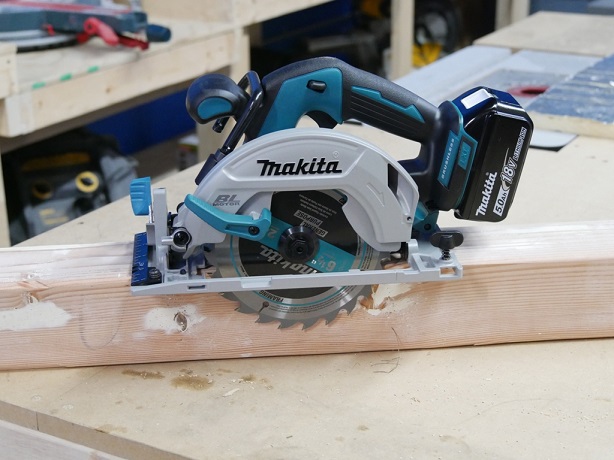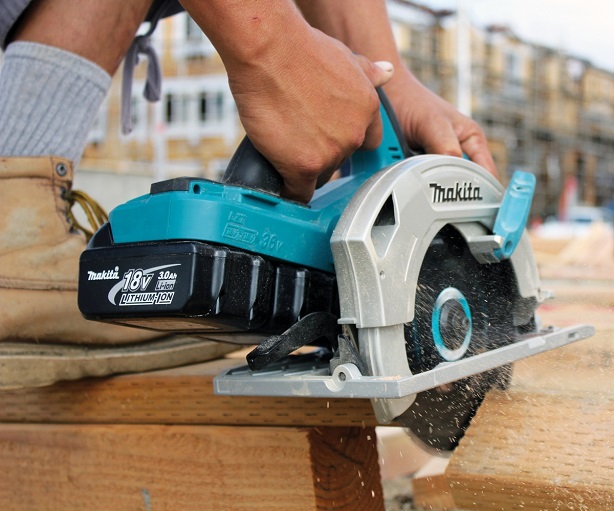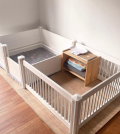A Guide to Cordless Circular Saws: What to Consider When Buying
Circular saws are one of the most commonly used cutting tools designed to split a wide range of materials, including wood, masonry and steel. They’re very precise and accurate, making them suitable for a wide range of applications. Most people think of circular saws as tools with a toothed blade, but those are only capable of cutting through wood. And although that was their initial purpose, they can now chew much more. I’ll give you an in-depth insight into the world of circular saws, so you know whether you should get a budget one, or a more professional Makita cordless circular saw you laid your eyes on online.
Intro Into Circular Saws

Believe it or not, the first circular saw was invented by Tabitha Babbit. Unfortunately, her invention wasn’t patented, so some clever individuals claimed the idea as their own, and released what was the first reiteration of a circular saw. Tabitha Babbit was a Shaker, superstitious people that didn’t like the idea of dealing with machinery.
However, their lumberman went through many hurdles that impacted their productivity. They spent a lot of time cutting longs as they only used long pit saw blades. Two people had to operate the pit saw with a pull and push mechanism that only work in one direction. Arguments would incur about one person not pulling or pushing enough. But the issue didn’t become serious until the whole Shaker community had enough economic endurance.
Eventually, they gave in to Tabitha’s idea, who came up with a pedal-powered circular saw blade. She first made a miniature tin disk and tested it to cut a bunch of thin materials. When she was assured of the concept, she came up with the circular saw. Her husband attached the blade to a spinning mechanism. It was that moment when the Shaker people discarded the use of pit saws and started using the first “industrial-grade” circular saw.
Enough History, What Matters Today?
Nowadays, circular saws can be either corded or cordless, powered by either electricity or fuel.
Corded circular saws, as their name suggests, feature a cord that plugs into a power main. As you can imagine, this limits mobility, but typically, corded models are more powerful than their cordless counterparts. Moreover, corded circular saws are robust and capable of cutting through a wide range of materials. Another advantage is that their features aren’t limited. There’s a no holds concept and powerful features abound. Industrial corded circular saws can cut metal sheets, ice blocks and thick wood panels.
Cordless models, on the other hand, provide raw power and unlimited mobility. They provide high RPM rotation and are typically handheld. Most modern circular saws, such as the Makita cordless circular saw, take advantage of Li-Ion batteries, the strongest batteries available to date. While you can go for a more affordable model, its performance and duty cycle will be underwhelming. Another great thing is that there are so many cordless models, all of which are quite compact and easy to carry and use.
As you can see, both corded and cordless models come with their own advantage and disadvantages. Depending on how you intend to use the circular saw, your choice will vary.
Features That Matter

Bevel Cuts
Bevel cuts are special angled cuts that refine the material’s appearance. Oftentimes, these types of cuts are needed for the project’s working mechanism and ergonomics, think hinges on a cabinet, exterior overhead designs, etc.
Blade Housing vs Guard
Blade guards are the protective covers that go over the blade. They’re available in circular and semi-circular shapes. you can remove them completely and slide them from one side to the other. Their purpose is to protect you while the blade is not in use. It’s something you should look for in every circular saw model you consider. Besides protecting your limbs, blade guards protect the blade itself, reducing the amount of maintenance it requires.
Blade housing, on the other hand, is the actual body of the saw, and it covers the blade almost entirely.
Depth Adjustment
This feature allows you to adjust the depth of your cuts. Some models grind to a halt when pushed through thick materials. That being said, the depth figure of each saw should be specified on the package. For example, a DeWalt 7.25-inch saw can go to a depth of up to 8 inches. As aforementioned, since bevel cuts are angled, some models allow for tilt motion. This is where you tilt the saw to a 45 degree to get a cleaner cut. A 7.25-inch saw blade can go to a depth of 8 inches, but there’s no guarantee that you’ll make bevel cuts the deeper you go.
Electric Brake
This is another safety mechanism that most modern circular saws have. As aforementioned, circular saws can pose a huge threat to your limbs, and an electric brake can prevent that. Electric brakes can stop the operation of the circular saw immediately.






